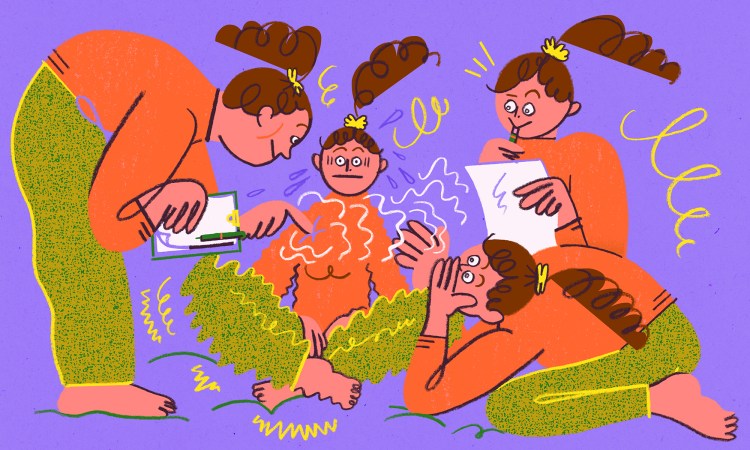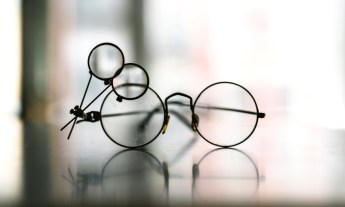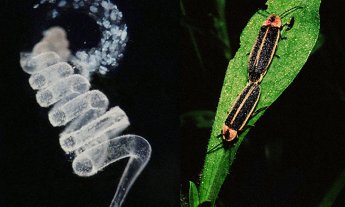
Back in 2006, psychologists Jordan Litman and Paul Silvia identified two main “flavors” of curiosity, which they dubbed D-curiosity and I-curiosity.
The D in D-curiosity stands for deprivation, the idea that if we have a gap in information, we go into a restless, unpleasant, need-to-know state, while the I in I-curiosity stands for interest, the pleasurable aspects of the hunger for knowledge. In other words, curiosity — our drive for information — can induce a state that is either aversive or pleasant.
Deprivation curiosity is driven by a lack of information, often a specific piece of information. For example, when you see a picture of a famous actress and you can’t remember her name, you might start racking your brain to remember who it is. Trying to remember might get you into a contracted state, as though you are trying to squeeze that answer out of your brain. Then when you go to google for help and see her name, you feel a sense of relief because you’re no longer deprived of the information.
This extends to texting and social media. If you are out to dinner and you feel or hear a text come into your phone, you might notice that suddenly it’s hard to pay attention — not knowing what the text says can make you restless, causing your body temperature to rise, and that fire of uncertainty is only put out when you check your phone.
Each of the curiosity “flavors” feels different in our bodies — deprivation feels closed, while interest feels open.
Interest curiosity is piqued when we’re interested in learning more about something. Usually this isn’t a specific piece of information (like an actress’s name) but a broader category. For example, did you know that there are animals who keep growing in size until they die? They are called “indeterminate growers” and include sharks, lobsters and kangaroos. In fact, based on its size, one 20-pound lobster was believed to be 140 years old. That’s one big, old lobster! Isn’t that fascinating?
Interest curiosity is when you dive into an internet search and realize hours later you’ve learned a whole bunch of stuff and your thirst for knowledge has been quenched. It feels good to learn something new. This is different from filling a deficit, simply because you weren’t experiencing a deficit in the first place. For instance, you didn’t know about big, old lobsters but when you learned about them, you were intrigued and delighted to know more.
Unlike the D-curiosity — which is about reaching a destination — the I-curiosity is more about the journey. Each of these curiosity “flavors” has different “tastes”, and they feel different in our bodies. Deprivation feels closed, while interest feels open.
What this means is getting more and more curious about what anxiety feels like in your body, instead of assuming you know everything about it or that it will never change.
Most of us approach ourselves and the world with D-curiosity, like a problem to be solved. But we’re all in the perfect place to tap into our I-curiosity, which we can leverage to help ourselves break old habits and build new ones.
In practice, what this means is getting more and more curious about what anxiety feels like in your body and how it triggers your worry and procrastination habit loops, instead of assuming you know everything about anxious or that your feelings will never change or you have to find a magic pill or technique to cure you of it.
Over the years, I’ve found that curiosity is a simple tool that helps people — regardless of language, culture and background — drop directly into their embodied experience and tap into their natural capacities for wonder and interest. It puts people right in that sweet spot of openness and engagement.
Let me walk you through a curiosity exercise that I teach everyone on Day 1 in the Unwinding Anxiety app. This exercise can work as a kind of panic button for when anxiety hits, and it takes about 2 minutes.
Whenever I do this exercise, I like to use the mantra “Hmmmm”. It allows me to bring a playful, even joyful attitude to what I’m doing.
Step 1:
Find a quiet comfortable place. You can be sitting, lying down or standing up; you just need to be able to concentrate without being distracted.
Step 2:
Recall your most recent run-in or incident with a habit loop, which is any habit you find yourself returning to whenever you’re worried or anxious.
See if you can remember the scene and relive that experience, focusing on what you felt right at the time when you were about to act out your habitual behavior. What did that urge to go ahead and “do it” feel like?
Step 3:
Check in with your body. What sensation can you feel most strongly right now?
Here’s a list of single words or phrases to choose from. Pick only one — the one you feel most strongly:
tightness
pressure
contraction
restlessness
shallow breath
burning
tension
clenching
heat
pit in stomach
buzzing/vibration
Step 4:
In terms of this feeling, is it more on the right side or the left? In the front, middle, or back of your body? Where do you feel it most strongly?
And was there anything you noticed about being curious about what part of your body you felt the sensation in? Did being a little curious help with getting closer to this sensation?
Step 5:
If the sensation is still there in your body, see if you can get curious and notice what else is there. Are there other sensations you’re feeling? What happens when you get curious about them? Do they change? What happens when you get really curious about what they feel like?
Step 6:
Follow them over the next 30 seconds — not trying to do anything to or about them — but simply observing them. Do they change at all when you observe them with an attitude of curiosity?
Whenever I do this exercise, I like to use the mantra “Hmmmm” — as in, the hmm you naturally emit when you’re curious about something (and not to be confused with the traditional mantra “Om”). I find saying “hmm” to myself gets me out of my head and into a direct experience of being curious. It also allows me to bring a playful, even joyful attitude to what I’m doing; it is hard to take yourself too seriously when you are hmm-ing.
If you notice that by being curious you gained even a microsecond more of being with your thoughts, emotions and sensations than you have in the past, then you’ve taken a huge step forward.
This short exercise is just intended to give you a taste of curiosity and to support your natural capacity to be aware about what is happening in your body and your mind at any moment instead of getting caught up in a habit loop. If you notice that by being curious you gained even a microsecond more of being with your thoughts, emotions and body sensations than you have in the past, then you’ve taken a huge step forward.
Here’s what a patient in the Unwinding Anxiety program told me about curiosity:
When I first started the program, I didn’t quite buy into the benefits of curiosity. Today, I felt a wave of panic, and instead of immediate dread or fear, my automatic response was “Hmm, that’s interesting.” That took the wind right out of its sails! I wasn’t just saying it was interesting; I actually felt it.
Sometimes I get the question “What happens if I’m not curious?” My response is to use the mantra of hmmm to drop right into your experience. Ask yourself: “Hmm, what does it feel like not to be curious?”
This helps people move from their thinking, fix-it mind state into a curious awareness of their direct sensations and emotions in their bodies and move out of their thinking heads and into their feeling bodies.
Excerpted with permission from the new book Unwinding Anxiety: New Science Shows How to Break the Cycles of Worry and Fear to Heal Your Mind by Judson Brewer MD PhD. Published by Avery, an imprint of Penguin Random House, LLC. © 2021 by Judson Brewer.
Watch his TEDMED Talk here:
Watch this TED-Ed Lesson about panic attacks here:















